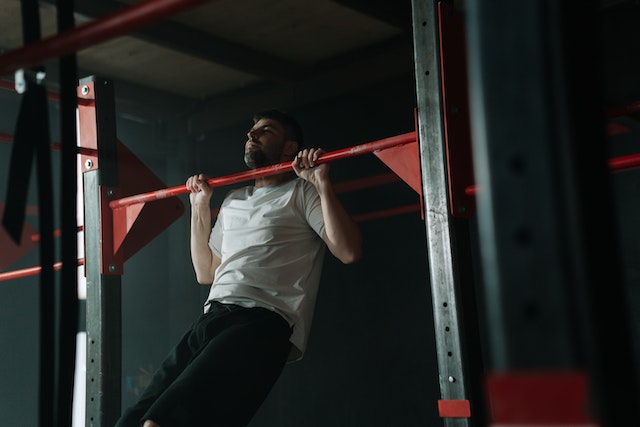Are you ready to elevate your fitness routine to new heights? Calisthenics, a bodyweight-based exercise regimen, offers a world of possibilities for sculpting your physique and improving your overall fitness. In this article, we’ll explore the exciting world of calisthenics, delving into its numerous pros and potential cons, so you can make an informed decision about incorporating this dynamic form of exercise into your fitness journey.
Pros of Calisthenics
Accessibility and Cost-Effectiveness
Calisthenics breaks down the barriers to fitness by requiring little to no equipment. You can perform bodyweight exercises anytime, anywhere, without the need for a pricey gym membership or specialized equipment. It offers a low-cost alternative that allows anyone to get in shape without breaking the bank.
Functional Strength and Muscle Development
Calisthenics engages multiple muscle groups simultaneously, promoting functional strength that translates to real-life activities. By focusing on bodyweight movements, you build strength and muscle in a way that supports everyday tasks and movements, improving your overall physical capabilities.
Improved Flexibility and Mobility
Calisthenics emphasizes full range of motion in movements, helping to improve flexibility and joint mobility. As you progress in your calisthenics journey, you’ll notice increased flexibility, making daily movements and sports activities feel more fluid and effortless.
Enhances Body Control and Balance
Calisthenics is not just about building strength; it’s about developing body control and balance. Through exercises like handstands, levers, and balancing movements, you improve your proprioception, body awareness, and stability. This improved control not only aids in calisthenics movements but also helps prevent injuries in other activities.
Versatile and Customizable
Calisthenics offers a wide variety of exercises and progressions to suit individuals of all fitness levels. Whether you’re a beginner or an advanced athlete, there are endless possibilities for scaling movements and adjusting intensity to meet your specific goals and abilities.
Boosts Cardiovascular Endurance
While calisthenics is primarily focused on strength and muscle development, many exercises can be performed in a high-intensity circuit format, providing a cardiovascular workout that improves endurance. Combining calisthenics with interval training can enhance your overall cardiovascular fitness.
Requires Minimal Time Commitment
Calisthenics workouts are highly efficient, allowing you to achieve significant results in shorter time frames. By performing compound exercises that work multiple muscle groups simultaneously, you can maximize your training sessions and enjoy the benefits of a full-body workout in less time.
Builds a Strong Mind-Body Connection
Calisthenics encourages mindfulness and the development of a strong mind-body connection. As you focus on controlling your body through various movements, you become more in tune with your physical sensations, improving your mental concentration and overall well-being.
With these eight pros of calisthenics, you can unleash your full potential by embracing a workout routine that is accessible, versatile, and effective. Calisthenics not only strengthens your body but also enhances your flexibility, balance, endurance, and mind-body connection. So why wait? Dive into the world of calisthenics and experience the incredible benefits for yourself.
Cons of Calisthenics
Initial Strength Requirements
Calisthenics exercises can be challenging for beginners who may lack the necessary strength and coordination to perform certain movements. It can take time to build up the foundational strength needed to progress to more advanced exercises.
Limited Resistance for Advanced Training
As you become stronger and more experienced in calisthenics, bodyweight alone may not provide enough resistance to continue challenging your muscles. To overcome plateaus and continue progressing, additional equipment or alternative training methods may be necessary.
Difficulty in Tracking Progress
Unlike weightlifting, where you can easily track your progress by increasing the amount of weight lifted, calisthenics progress can be more challenging to measure. Since the focus is on mastering complex movements and improving technique, progress tracking becomes more subjective and reliant on personal goals and skill acquisition.
Risk of Overtraining and Injury
Calisthenics exercises often require a high level of intensity and involve complex movements. Without proper form, guidance, and rest, there is an increased risk of overuse injuries and strain on joints, tendons, and muscles. Beginners, in particular, may need supervision to ensure they are executing movements safely.
Limited Exercise Variety for Specific Muscle Isolation
While calisthenics engages multiple muscle groups simultaneously, it may not provide the same level of isolation and targeting as weightlifting or using specialized gym equipment. If your goal is to specifically target and develop certain muscles, calisthenics alone may not be the most efficient approach.
Progression Can Be Slower for Limited Strength Individuals
Individuals with limited strength may find it more challenging to progress in calisthenics compared to those who have a higher baseline of strength. The need to build foundational strength before advancing to more advanced movements may require patience and persistence.
Requirement for Adequate Space and Equipment
Although calisthenics can be performed anywhere, some advanced movements may require more space and specialized equipment, such as pull-up bars, parallel bars, or rings. Lack of access to these resources can limit exercise options and progression.
Lack of External Resistance for Muscular Hypertrophy
If your primary goal is muscular hypertrophy (increasing muscle size), calisthenics may not be as effective as weightlifting with external resistance. While calisthenics can promote muscle development, the potential for significant muscle growth may be more limited without the ability to progressively increase external weight.
By acknowledging these cons, you can be better prepared to overcome the challenges that may arise during your calisthenics journey. While there are limitations and considerations, calisthenics remains a powerful and accessible form of exercise that can enhance strength, flexibility, and overall fitness when approached with knowledge and proper training techniques.






